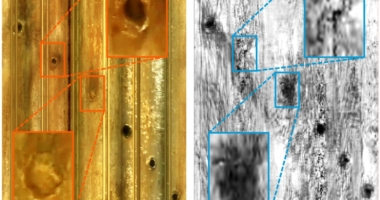Moore’s law, named after Intel co-founder Gordon Moore, states that the number of transistors on a microchip will double every two years, leading to exponential growth in computing power. This has had a profound impact on artificial intelligence (AI) as it requires massive amounts of data and computing power to train its algorithms. As chips continue to get smaller and more powerful, AI will become even more ubiquitous and influential. While Moore’s law has been remarkably accurate over the past few decades, there are signs that it may be slowing down, as processor speeds have plateaued in recent years. However, its impact on the tech industry is undeniable, driving innovation and progress for half a century, and its legacy will continue to shape the future of AI and other cutting-edge technologies.
Moore’s Law is a concept that has been driving technological advancements for over 50 years and has had a profound impact on AI. In simple terms, it states that the number of transistors on a microchip will double every two years, leading to exponential growth in computing power. This exponential improvement in computer hardware performance over the last few decades is commonly referred to as Moore’s law. As computer hardware continued to improve at an exponential rate, AI researchers were finally able to start building systems that could begin to approach human levels of intelligence. This breakthrough led to the rapid expansion of machine learning, a subset of AI that led to the development of many successful applications such as self-driving cars and digital assistants.
Moore’s Law is often cited as one of the key reasons why AI has seen such rapid progress in recent years. This trend will likely continue, leading to even more amazing advances in AI technology. However, the impact of AI on society is not fully understood yet. AI has the potential to revolutionize industries such as healthcare, transportation, and manufacturing, but it also raises concerns about job displacement and ethical considerations. The implications of AI on society are still being debated and will require careful consideration in the coming years.

In May of 1965, Gordon Moore published a paper titled “Cramming more components onto integrated circuits”. In this paper, Moore predicted that the number of transistors on a given chip would double approximately every two years. While initially only a trend observed in the semiconductor industry, Moore’s law has come to represent an exponential improvement in computing power in general. Today, Moore’s Law continues to hold true, with some experts predicting that it will continue until the physical limits of miniaturization are reached.
In conclusion, Moore’s Law is one of the most important concepts in modern technology, and its impact on AI cannot be overstated. As the exponential improvement in computing power continues, we can expect to see even more impressive advances in AI technology. However, it is also important to consider the potential implications of AI on society and to approach this technology with caution and careful consideration.
Moore’s law, which states that the number of transistors on a microchip will double every two years, has allowed AI to make significant advances in recent years due to the data-hungry computing requirements of deep learning systems. This has led to the development of many successful applications such as self-driving cars and digital assistants.
However, there are still many challenges that need to be overcome before AI can reach its full potential. Some experts believe that Moore’s law will eventually reach its limits, leading to a slowdown in the rate of AI development. However, others believe that alternative technologies will allow Moore’s law to continue indefinitely.
Gordon Moore, the co-founder of Intel, made the bold prediction in 1965 that the number of transistors on a chip would double every two years. This simple observation has held true for over 50 years and has had a profound impact on our world. Moore is widely respected for his technical achievements and business acumen, and he has been recognized with many prestigious awards.
The exponential growth in computing power predicted by Moore’s law has had a significant impact on AI, which requires massive amounts of data and computing power to train its algorithms. As chips continue to get smaller and more powerful, AI will become even more ubiquitous and influential.
However, the impact of AI on society is still being debated. While AI has the potential to revolutionize industries such as healthcare, transportation, and manufacturing, it also raises concerns about job displacement and ethical considerations. It is important to approach this technology with caution and careful consideration.
In conclusion, Moore’s law has allowed AI to make significant advances in recent years, but there are still many challenges that need to be overcome before AI can reach its full potential. The impact of AI on society is still being debated, and it is important to consider the potential implications of AI on society and to approach this technology with caution and careful consideration.
As electronic devices get smaller and more powerful, the potential for artificial intelligence (AI) gets bigger. This is due to Moore’s law, which states that the number of transistors on a microchip will double approximately every two years. As a result, AI applications can be built into ever-smaller devices, making them more accessible and affordable.
In addition, as devices become more powerful, they can process more data faster. This is essential for AI because machine learning – a type of AI that enables computers to learn from data – relies on large datasets to be effective. The more data an AI system has to work with, the better it can learn and make predictions.
Moore’s law has been remarkably accurate over the past few decades, and there’s no reason to believe it won’t continue to hold in the future. As AI technology continues to improve at an exponential rate, we can expect even more amazing applications of this transformational technology in the years to come.
The impact of Moore’s law on society has been profound. The exponential increases in computing power made possible by ever-smaller transistors have driven economic growth, transformed entire industries, and improved the lives of billions of people around the world. As transistor counts continue to increase, so too does the potential for AI applications.
The continued miniaturization of transistors enables more powerful AI applications by providing both the necessary data processing capacity and physical space for AI hardware such as GPUs. As AI technology continues to advance, we can expect even more transformative changes in the years ahead.
However, it’s difficult to predict the future of technology, and Moore’s law won’t last forever. As transistor counts continue to increase, the challenges of heat dissipation and power consumption become more difficult to overcome. Some experts believe that alternative technologies will allow Moore’s law to continue indefinitely, while others predict that it will eventually reach its limits.
In conclusion, Moore’s law has allowed AI to make significant advances in recent years, and its impact on society has been profound. As transistor counts continue to increase, we can expect even more amazing applications of this transformational technology in the years to come. However, the question of how much longer Moore’s law can stand the test of time remains unanswered.
Moore’s law originally referred to the number of transistors on a chip doubling every two years, but its definition has changed to refer to the overall performance of a chip improving at a similar rate. It has held for over 50 years, but there are signs that it may be slowing down. Processor speeds have plateaued in recent years, and it’s impossible to know exactly how long Moore’s law will continue. Nonetheless, its impact on the tech industry is undeniable. It has driven innovation and progress for half a century, and its legacy will continue to shape the future of AI and other cutting-edge technologies.
Don’t miss interesting posts on Famousbio










